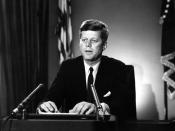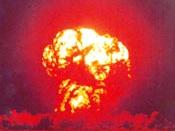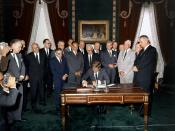Research Project:
Should Nuclear Weapon Testing Still Exist?
Nuclear Controversy
The United States made a secret military project called the "Manhattan Project" and developed its first atomic bomb called "Trinity" at the Alamogordo Test Range, on the Jornada del Muerto desert in New Mexico on July 16, 1945 (Trinity). They created this project due to the fear of Nazi Germany would build and use their own collection of nuclear weapons against the United States in World War II. After the successful explosion, the government then wrote the Comprehensive Nuclear-Test Ban Treaty (CTBT) in 1996.
The government took a step into limiting how many nuclear tests we can do so we will not risk the lives of our people. The CTBT bans all nuclear explosions in all environments for military or civilian purposes. It was adopted by the United Nations General Assembly on September 10, 1996 but has not been officially ratified until all the countries: China, Egypt, India, Indonesia, Iran, Israel, North Korea, Pakistan, and the United States to enter the agreement.
Since this treaty is not ratified, some could still try to test without abiding the provisions, for example, when China exploded their nuclear weapon in 1992. (History)
Nuclear weapons are far more destructive than other weapons. They pose a threat of a nuclear war such as the bombing of Hiroshima and Nagasaki and the Cuban Missile Crisis of 1962. Also, the radiation that these weapons can release after the explosions risks the health of people and the surrounding environment such as radiation sickness, cancer, and will contaminate the earth's soil.
At Los Alamos, New Mexico they produced two weapons, called "Little Boy" on Hiroshima, Japan and "Fat Man" on Nagasaki, Japan after Japan attacked a U.S. military base in Hawaii at the start of World War II. Before...


